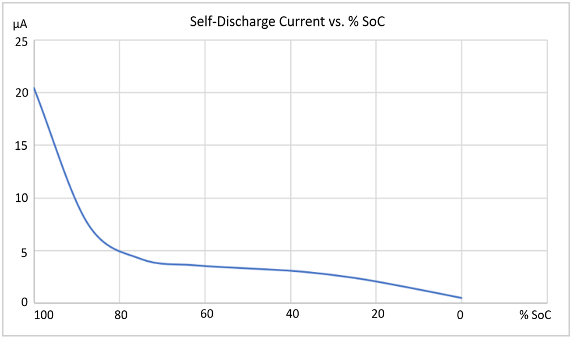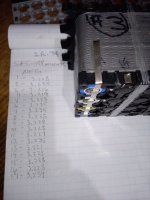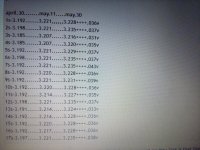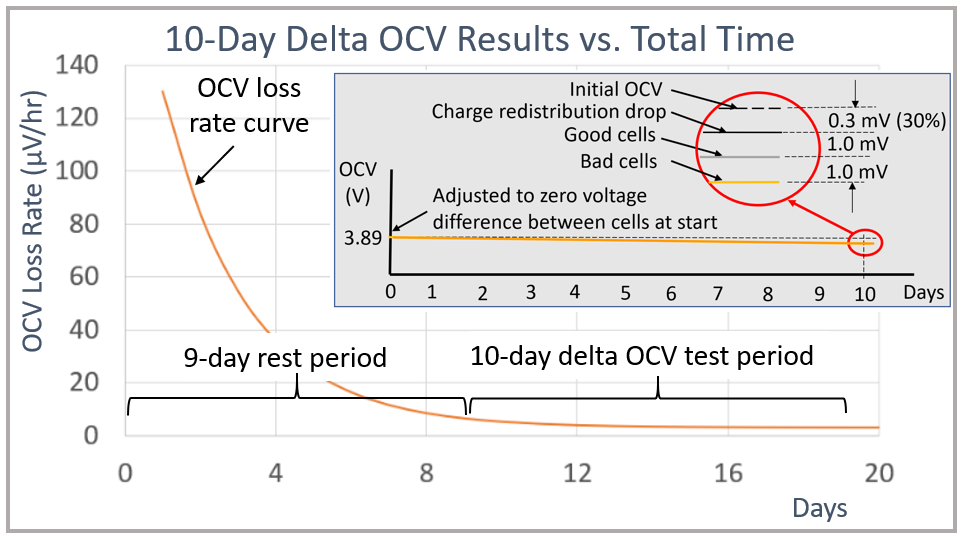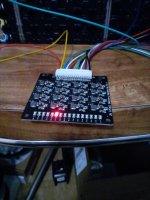goatman
10 MW
its been awhile to remember waaay back in april 
[quoteHow low was your discharge amperage to from 4.10v to 3.185v on april 15 ? Did you record equalized voltage at 3.185v ASAP before any bounce back voltage? Do april 30 voltage readings represent the bounce back voltage from 3.185v ?
][/quote]
that would be bounce back
only a couple days
pack 3 i never did put to use yet, its still just sitting there on the table
just checked the voltages

i just grab the cells and equalize them with each other
some might of been 3.8v others as low as 3.0v
like in this thread
https://endless-sphere.com/forums/viewtopic.php?f=14&t=112570#p1665165
[quoteDo you yet have an opinion on whether discharging to 2.5v or 3.0v or 3.185v gives better results (regenerate) to minimizing self-discharge ? How did you happen to settle on 3.192v. Is that the cut-off voltage of your controller?
Do you think if more 30Q battery packs were discharged to 3.20V before recharging again to 4.10v that self-discharge would be less of a problem with energy dense cells ?][/quote]
i think taking them to 2.5v every 100 or so cycles or before putting them in storage with an active cell balancer is all you need.
the sony vtc6 i havent touched since the previous post and they equalized really well and are holding steadt still
[quoteHow low was your discharge amperage to from 4.10v to 3.185v on april 15 ? Did you record equalized voltage at 3.185v ASAP before any bounce back voltage? Do april 30 voltage readings represent the bounce back voltage from 3.185v ?
][/quote]
that would be bounce back
This time you equalized cell voltages close to 3.192v with three notable exceptions (3.198, 3,198, 3.197). The best performer being 7s. How many days were these cells equalized (evidently not 1 month as with pack 2) before recording the above equalized voltages ? How do you account for two cells at 3.198v and 1 cell at 3.197v ?
only a couple days
pack 3 i never did put to use yet, its still just sitting there on the table
just checked the voltages

i just grab the cells and equalize them with each other
some might of been 3.8v others as low as 3.0v
like in this thread
https://endless-sphere.com/forums/viewtopic.php?f=14&t=112570#p1665165
[quoteDo you yet have an opinion on whether discharging to 2.5v or 3.0v or 3.185v gives better results (regenerate) to minimizing self-discharge ? How did you happen to settle on 3.192v. Is that the cut-off voltage of your controller?
Do you think if more 30Q battery packs were discharged to 3.20V before recharging again to 4.10v that self-discharge would be less of a problem with energy dense cells ?][/quote]
i think taking them to 2.5v every 100 or so cycles or before putting them in storage with an active cell balancer is all you need.
the sony vtc6 i havent touched since the previous post and they equalized really well and are holding steadt still


